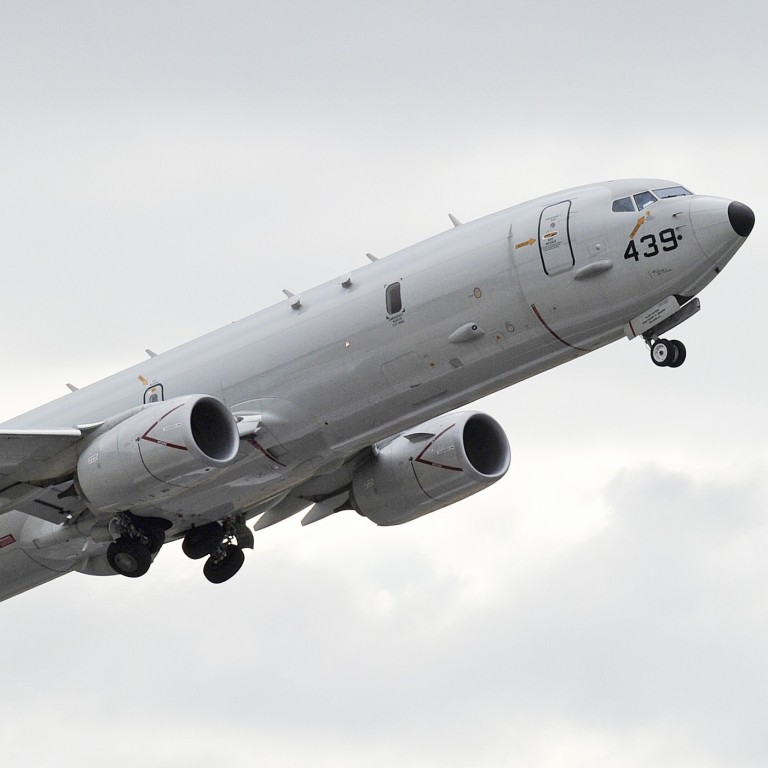
Indonesia rejects US request to let spy planes land, avoiding taking sides in US-China tensions
- The US has used bases in Singapore, the Philippines and Malaysia to operate P-8 Poseidon maritime surveillance flights over the South China Sea
- Indonesia has never allowed foreign militaries to operate there, and analysts say Washington’s aggressive anti-China policy has unnerved the region
Representatives for Indonesia’s president and defence minister, the US State Department press office and the US embassy in Jakarta did not respond to requests for comment. Representatives for the US Department of Defence and Indonesia’s Foreign Minister Retno Marsudi declined to comment.
US Air Force on surveillance missions in South China Sea, Beijing think tank says
Indonesia is not a formal claimant in the strategically important waterway, but considers a portion of the South China Sea as its own. It has regularly repelled Chinese coastguard vessels and fishing boats from an area to which Beijing says it has a historic claim.
But the country also has growing economic and investment links with China. It does not want to take sides in the conflict and is alarmed by growing tensions between the two superpowers, and by the militarisation of the South China Sea, Retno said.
“We don’t want to get trapped by this rivalry,” Retno said in an interview in early September. “Indonesia wants to show all that we are ready to be your partner.”
Explainer: Why are tensions running high in the South China Sea dispute?
Despite the strategic affinity between the US and Southeast Asian states in curbing China’s territorial ambitions, Dino Patti Djalal, a former Indonesian ambassador to the United States, said the “very aggressive anti-China policy” of the US had unnerved Indonesia and the region.
“It’s seen as out-of-place,” he told Reuters.
“We don’t want to be duped into an anti-China campaign. Of course we maintain our independence, but there is deeper economic engagement and China is now the most impactful country in the world for Indonesia.”
Greg Poling, a Southeast Asia analyst from the Washington-based Center for Strategic and International Studies, said trying to get landing rights for spy planes was an example of clumsy overreach.
“It’s an indication of how little folks in the US government understand Indonesia,’ he said. “There’s a clear ceiling to what you can do, and when it comes to Indonesia that ceiling is putting boots on the ground.”
Close encounter between US-China militaries captured by radio amateur
The US recently has used military bases in Singapore, the Philippines and Malaysia to operate P-8 flights over the South China Sea, military analysts said.
China has ramped up military exercises this year, while the US has increased the tempo of naval freedom of navigation operations, submarine deployments and surveillance flights.
The P-8, with its advanced radar, high definition cameras and acoustic sensors, has been mapping the islands, surface and underwater realms of the South China Sea for at least six years.
US power advantage over China declines in wake of coronavirus pandemic
When carrying sonobuoys and missiles, the planes can detect and attack ships and submarines from long range. It also has communications systems that allow it to control unstaffed aircraft.
In 2014, the US accused a Chinese fighter jet of coming within 20 feet and executing a barrel roll over a P-8 patrolling the South China Sea.
China described the US complaint as “groundless”.

